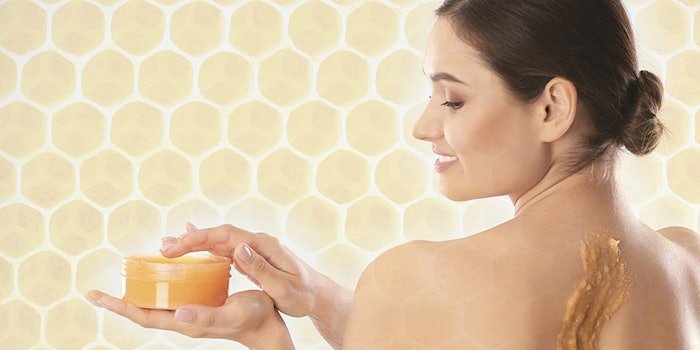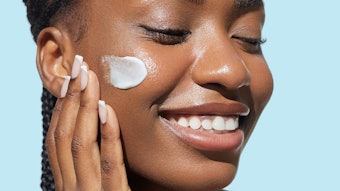
Historically, consumers have selected cosmetic products to deliver a result, while sensory stimulation was considered a secondary benefit, especially in mass-marketed products. Today, consumer demands are growing. Products still must deliver results—and quickly—but also amaze on many levels, even from the first use.1 Appealing to the senses is one way to make a good first impression in a short window of time. As such, appearance, fragrance and texture are key elements that can emotionally connect with consumers.
The way a product feels to the touch is a particularly important factor. Transformative, surprising, innovative and unusual textures can make a lasting impression2 since subconsciously, consumers link this trait to a product’s functionality and even its value. For example, a thicker lotion can be perceived as more moisturizing than a thinner one.3
Waxes can contribute to both a formula’s functionality and sensoriality, which is why they are widely used in cosmetic and OTC drug applications. From a functional standpoint, they are film-formers capable of replenishing the skin’s natural lipids and contributing to water retention by the stratum corneum.4 As for sensory effects, waxes are well-known for their thickening properties but they also have been found to offer a wide variety of sensations when applied to the skin.
In anhydrous systems, waxes interact with oils to produce an extensive range of textures: jellies, sticks, creams, balms and transformational forms. In emulsions, they thicken the formula as well as impact product esthetics, such as gloss, firmness, rub-out and after-feel.
This article limits its focus to beeswax and applications in anhydrous formulations as a texture modifier. Formulation chemists will benefit from understanding both the composition of beeswax and its physical and chemical properties, as this complexity will play a role in the final formula attributes including appearance, stability, sensory profile and performance.
Universal Utility
Beeswax is the oldest wax known to man, with documented waterproofing uses dating as far back as 7,000 B.C.5 It has been considered a valuable resource ever since, and its application in cosmetics can be attributed to the ancient Chinese, who used it in early nail enamels.6
Today, beeswax is leveraged in many different areas, including cosmetics. In 2018, 48% of new launches in the natural lip care and lip color segments contained beeswax.7 The ingredient’s widespread use across the globe and throughout history is due to its efficacy and unique nature; including as a texture modifier.
Wax Properties
Waxes are water-insoluble, solid mixtures of long-chain hydrocarbons or esters of higher fatty acids and alcohols. They become soft, pliable and liquid when they are warm and variably hard when they are cold.8 Being broadly defined, waxes are generally classified according to their origin and within each category, which can be narrowed by chemical composition. Thus, beeswax, similar to other natural waxes, is a complex mixture of long chain monoesters, hydrocarbons and free fatty acids; its uniqueness, however, lies in the presence of polyesters, free fatty alcohols and other minor components.9 The latter varies greatly with regional vegetation; examples range from citronellol and cinnamic acid, to pterostilbene, squalene, flavonone and many others.9
The uniqueness of beeswax lies in the presence of polyesters, free fatty alcohols and other minor components.
Beeswax is biosynthesized by Apis mellifera honey bees. The process is complex but in short, worker bees metabolize the monosaccharides found in their food sources into the lipidic components that constitute virgin beeswax.10 This newly secreted beeswax is then mixed with propolis, a diverse mixture of resins, oils and pollen collected by the bee from surrounding vegetation, and chewed by the bee until it is ready to be used for the honey comb, with the purpose of supply storage and brood protection.11
Beeswax Organogels and Anhydrous Cosmetics
When beeswax is heated above its melt point and combined with a suitable solvent, e.g., vegetable oils, paraffin oils, silicone oils, etc., then cooled to room temperature, the resulting product is called an organogel. These systems have extensively been studied in the food industry as a replacement for trans fats;12 this technology is applicable to cosmetics as well.
In fact, a good understanding of organogels can be key to a successful anhydrous formulation. In these gels, the beeswax molecules are solvated by the liquid portion of the gel. Upon cooling, they self-assemble into a 3D network where the liquid is entrapped within. These networks are thermoreversible and have viscoelastic properties.13
Many waxes thicken and structure oils in this manner, and the gel hardness is always proportional to the percentage of wax. However, the other textural properties are not so easily predicted, as they depend on a balance between the solubility and insolubility of the oils and the waxes. Furthermore, the manner by which the gel is cooled also will have an impact on texture: gels that cool undisturbed will be harder than those that cool with mixing.
Figure 1 shows the hardness of beeswax gels, as measured by ¼ cone penetration, at three different concentrations and in three different oil mediums.14 In general, as the percentage of beeswax increases, so does the gel strength, resulting in lower penetration values. Beeswax generally yields harder gels in more polar oils, such as castor oil, and softer gels in less polar oils, such as isopropyl palmitate.
Figure 2 shows the hardness of the same castor oil gelled with three different waxes: beeswax, candelilla and sunflower wax, at three different concentrations.15 Again, a higher wax percentage yields harder gels but beeswax is a moderate gelling agent, compared with other natural waxes such as candelilla, sunflower or rice bran. This is due to its more diverse chemistry; the polyesters, policolsanols and minor components are unique and give it a second functionality as a plasticizer.16
Continue reading in the April 2019 Digital Edition...
References
- Tortini, A. (2015). “Sensory” cosmetics: Formulation strategies and evaluations in use. H&PC Today, 10(6), 52-55.
- Moeglin, E. (2015, Oct. 21). Experience is all: Sense is sensible for today’s beauty consumer. Retrieved from http://www.mintel.com/blog/experience-is-all-sense-is-sensible-for-todays-beauty-consumer
- Hoeu, K. (2018, April 2). Part 1 product development: Why is texture so important in skincare? Retrieved from https://beautymatter.com/2018/04/part-1-product-development-why-is-texture-so-important-in-skincare/
- Pappas, A. (2009). Epidermal surface lipids. Dermato-endocrinology, 1(2), 72-76.
- Roffet-Salge, M., et al. (2015). Widespread exploitation of the honeybee by early Neolithic farmers. Nature, 527, 226-230.
- A history of cosmetics from ancient times. Retrieved from http://www.cosmeticsinfo.org/Ancient-history-cosmetics
- Mintel. Retreived from http://www.gnpd.com/sinatra/gnpd/search
- SAGE Journals. (1984). Final report on the safety assessment of candelilla wax, carnauba wax, Japan wax and beeswax. J Am Col Toxicol, 3(3) 1.
- Puleo, S. L. (1991). Beeswax minor components: A new approach. Cosm & Toil, 106(2), 83-89.
- Hepburn, H. R. (1986). Honeybees and Wax. 44-55. Berlin: Springer-Verlag.
- Coggshall, W. L., and Morse, R. A., (1984). Beeswax Production, Harvesting, Processing and Products. 30-40. Ithaca, NY, U.S.: Wicwas Press.
- Co, E. D., and Marangoni, A. G. (2012). Organogels: An alternative edible oil-structuring method. J Am Oil Chem Soc, 89(5), 749–780.
- Kaushik, I., et al. (2017). Organogelation: Its food application. MOJ Food Process Technol, 4(2), 00089.
- Koster Keunen, Inc., proprietary data (unpublished)
- Koster Keunen, Inc., proprietary data (unpublished)
- Puleo, S., personal communication (2018, Mar.).











